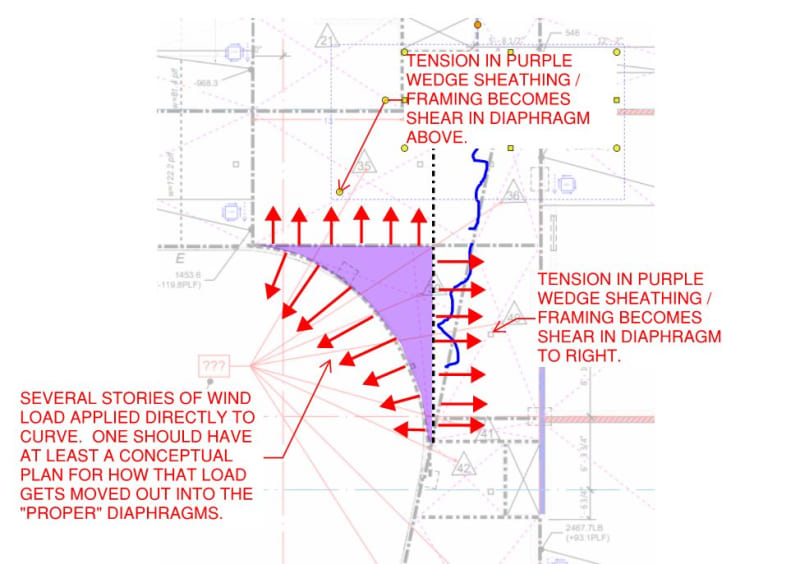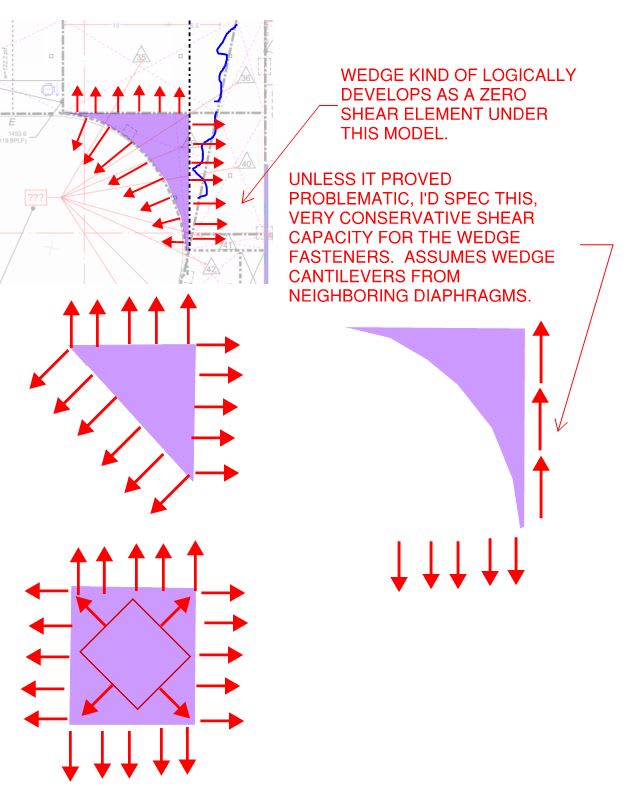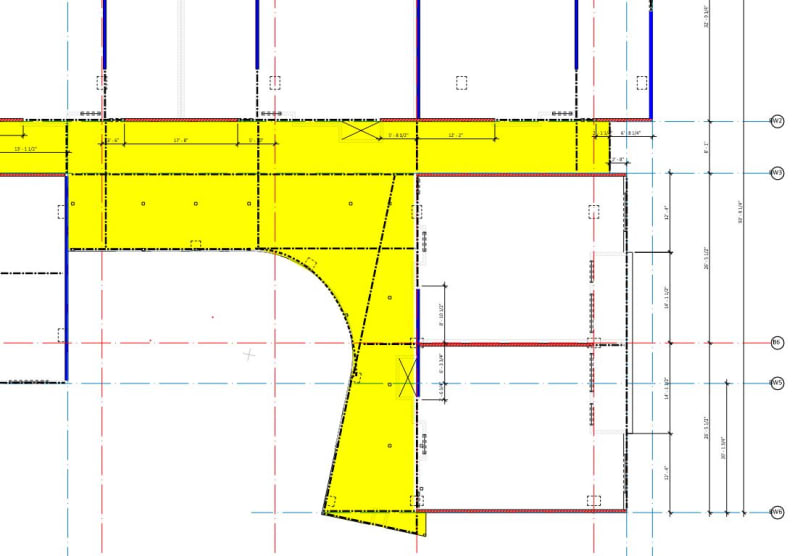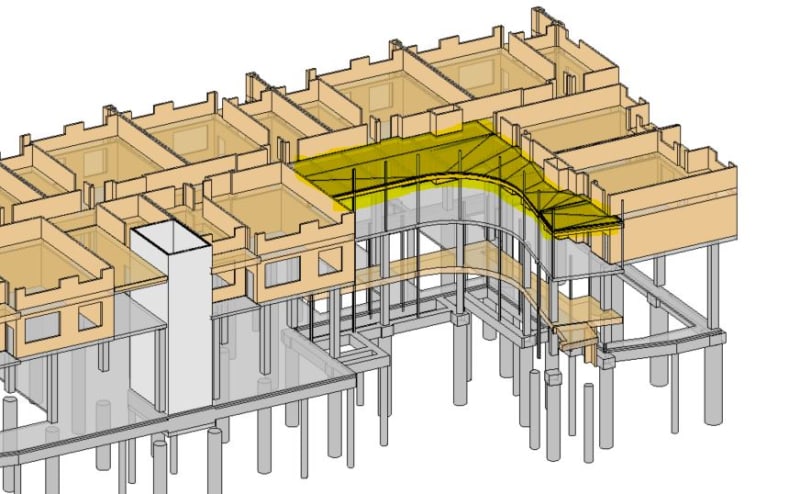I am determining the lateral force distribution through a wood-framed apartment building. Hardly any of the shear walls align across the central corridor. Also, there is a geometric irregularity that I haven't seen discussed anywhere: the corridor curves.
So, my main question is really: Is it "OK" to ignore the portion of the corridor that curves for the purpose of determining the forces in the diaphragms, collectors that "matter", and the shear walls? I just don't know how to account for the curve and resulting layout of diaphragms and collectors.
When I say "matter", what I am suggesting is that the way I have subdivided my diaphragms results in a chunk or group of "sub-diaphragms" that are bounded on 3 sides by collectors and only have a shear wall on one side. Can I effectively remove this whole chunk to determine all of the resulting forces in the remaining diaphragms/collectors/walls? Does that make sense?
Wetransfer link to PDF showing floor plan, diaphragms, and basic diaphragm shears: [URL unfurl="true"]https://we.tl/t-4lSD4xm6uW[/url]
So, my main question is really: Is it "OK" to ignore the portion of the corridor that curves for the purpose of determining the forces in the diaphragms, collectors that "matter", and the shear walls? I just don't know how to account for the curve and resulting layout of diaphragms and collectors.
When I say "matter", what I am suggesting is that the way I have subdivided my diaphragms results in a chunk or group of "sub-diaphragms" that are bounded on 3 sides by collectors and only have a shear wall on one side. Can I effectively remove this whole chunk to determine all of the resulting forces in the remaining diaphragms/collectors/walls? Does that make sense?
Wetransfer link to PDF showing floor plan, diaphragms, and basic diaphragm shears: [URL unfurl="true"]https://we.tl/t-4lSD4xm6uW[/url]




